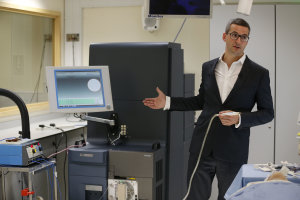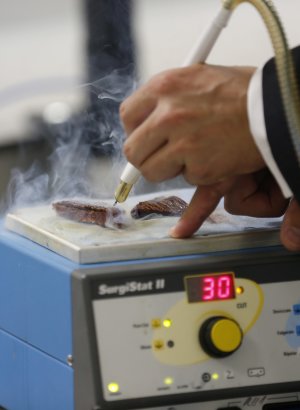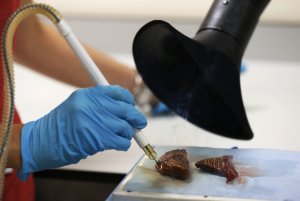You always wanted a glowing and radiant skin but did not know what to do? Well, here is a simple solution. Eat citrus fruits and add beauty to your skin. According to scientists, oranges and other citrus fruits can help you get the skin of your dreams. Topically apply citrus juices and get the sparkling skin, naturally!
 Citrus fruits have amazing antioxidant properties that protect the skin from daily damage and also long term wear and tear. Orange belongs to the family of citrus fruits and is filled with loads of nutritional compounds and healthy vitamins. Experts recommend people to consume lemons and oranges to get the natural supply of vitamin C. Vitamin C prevents bleeding from weak structures, infections, dyspepsia and also, helps to decrease your appetite. Vitamin C also helps in manufacturing collagen which helps in keeping the skin smooth, supple and youthful. These days; beauty is not a concern confined to women, men too are becoming more and more concerned about enhancing their looks.
Citrus fruits have amazing antioxidant properties that protect the skin from daily damage and also long term wear and tear. Orange belongs to the family of citrus fruits and is filled with loads of nutritional compounds and healthy vitamins. Experts recommend people to consume lemons and oranges to get the natural supply of vitamin C. Vitamin C prevents bleeding from weak structures, infections, dyspepsia and also, helps to decrease your appetite. Vitamin C also helps in manufacturing collagen which helps in keeping the skin smooth, supple and youthful. These days; beauty is not a concern confined to women, men too are becoming more and more concerned about enhancing their looks.
Follow some juicy lemony tips to have a radiant and glowing skin.
Lemon:
• Take a glass of lukewarm water and squeeze few drops of lemon in it. Add a spoon of honey and have it early in the morning. This concoction helps in eliminating the toxins from your body and maintains the hydration level.
• Mix 2 tablespoons of lemon juice and one tablespoon of honey and apply as a cure for dry skin. Lemon juice is a good bleaching agent and honey gives nourishment to your skin. So the combination is effective in making your skin soft and supple. Apply the mixture on your skin for 10-12 minutes and then wash off with clean water. Follow the routine for a week and you will be delighted to see your skin radiant and glowing.
Sour Lime:
According to the experts, brightly colored citrus fruits can make you shimmer. Lemon, lime and oranges are capable of imparting lasting glow and radiance to your skin. Lemons are known to have bleaching properties and can lighten the complexion. Simply rub a peeled lemon on your skin for 2-3 minutes. Be gentle in your strokes and do not be harsh. Wash the face with water.
Tangy Oranges:
Rub either the peel of an orange or the juice on your skin. It extracts the excess oil from your face and is extremely beneficial for oily skin. Make a powder of the dried orange peel and add some yogurt to it. Apply this coarse paste on your face and leave it for 5-6 minutes and then lightly scrub. Later wash off it with lukewarm water. Your skin will looker brighter. Try to reap the benefits of citrus fruits to the maximum and shun the harmful chemicals in cosmetics. Remember natural products promise you results that last and also, they are safe.
Follow some juicy lemony tips to have a radiant and glowing skin.
Lemon:
• Take a glass of lukewarm water and squeeze few drops of lemon in it. Add a spoon of honey and have it early in the morning. This concoction helps in eliminating the toxins from your body and maintains the hydration level.
• Mix 2 tablespoons of lemon juice and one tablespoon of honey and apply as a cure for dry skin. Lemon juice is a good bleaching agent and honey gives nourishment to your skin. So the combination is effective in making your skin soft and supple. Apply the mixture on your skin for 10-12 minutes and then wash off with clean water. Follow the routine for a week and you will be delighted to see your skin radiant and glowing.
Sour Lime:
According to the experts, brightly colored citrus fruits can make you shimmer. Lemon, lime and oranges are capable of imparting lasting glow and radiance to your skin. Lemons are known to have bleaching properties and can lighten the complexion. Simply rub a peeled lemon on your skin for 2-3 minutes. Be gentle in your strokes and do not be harsh. Wash the face with water.
Tangy Oranges:
Rub either the peel of an orange or the juice on your skin. It extracts the excess oil from your face and is extremely beneficial for oily skin. Make a powder of the dried orange peel and add some yogurt to it. Apply this coarse paste on your face and leave it for 5-6 minutes and then lightly scrub. Later wash off it with lukewarm water. Your skin will looker brighter. Try to reap the benefits of citrus fruits to the maximum and shun the harmful chemicals in cosmetics. Remember natural products promise you results that last and also, they are safe.
















